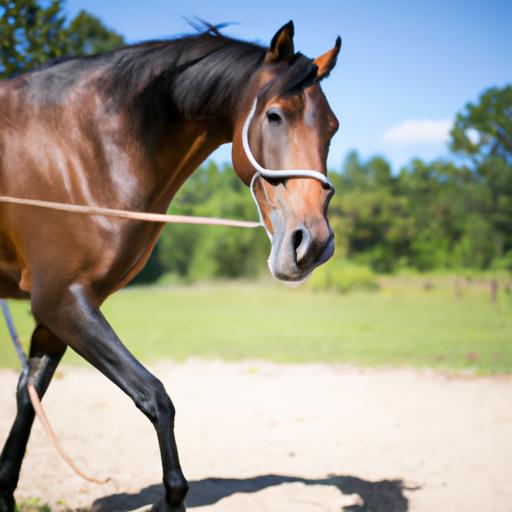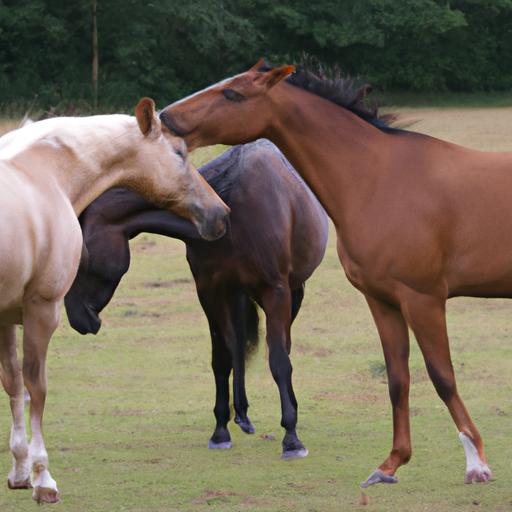Unlock the secrets of equine behavior with Paul McGreevy. Explore the relationship between behavior and horse health, signs of pain, and preventive measures.
Introduction to Equine Behavior and its Importance

Have you ever wondered why horses behave the way they do? Equine behavior is a captivating field that delves into the natural instincts and behaviors exhibited by these majestic creatures. Understanding equine behavior is not only crucial for horse enthusiasts but also plays a vital role in effective horse management and training. Today, I invite you to explore the realm of equine behavior alongside one of the foremost experts in the field, Paul McGreevy.
What is Equine Behavior and Why is it Significant?
Equine behavior refers to the study of how horses behave, communicate, and interact with their environment and other horses. By deciphering the intricacies of equine behavior, we gain valuable insights into their needs, preferences, and emotions. This knowledge enables us to provide optimal care, enhance training methods, and promote horse welfare.
The Role of Equine Behavior in Horse Management and Training
Understanding equine behavior is the key to effective horse management and training. By comprehending their natural instincts and behaviors, we can create an environment that promotes their physical and mental well-being. Moreover, it allows us to develop training techniques that align with their innate tendencies, resulting in more successful and harmonious partnerships between horses and humans.
Introducing Paul McGreevy: A Trailblazer in Equine Behavior
Among the prominent figures in equine behavior studies, Paul McGreevy stands out as an expert in the field. With a wealth of knowledge and experience, he has dedicated his career to unraveling the mysteries of equine behavior. As a veterinarian, ethologist, and professor at the University of Sydney, McGreevy has made significant contributions to the understanding of equine behavior and its practical implications.
Stay tuned as we dive deeper into the fascinating world of equine behavior alongside Paul McGreevy. In the upcoming sections, we will explore the natural instincts and behaviors of horses, the factors that influence their behavior, and common behavioral issues that arise. Let’s embark on this exciting journey together and unlock the secrets of equine behavior!
Stay tuned for Understanding Equine Behavior.
Understanding Equine Behavior
Natural Instincts and Behaviors of Horses
Horses possess a rich tapestry of natural instincts and behaviors that have evolved over centuries. These innate tendencies are deeply ingrained in their DNA and shape their interactions with the world around them. From their social structure to their responses to threats, understanding these natural instincts provides us with valuable insights into their behavior.
Horses are social animals, naturally inclined to live in herds. Within a herd, they establish a hierarchical structure, with a dominant leader and a clear pecking order. This social structure influences how they interact with other horses and humans. Understanding their herd dynamics allows us to create environments that promote social interaction and emotional well-being.
Additionally, horses are prey animals, which means they have finely tuned senses and an acute flight response. They are highly attuned to their surroundings, always on the lookout for potential threats. This instinctual response to danger can manifest as spooking or bolting, particularly in unfamiliar or stressful situations. Recognizing these natural behaviors helps us provide a secure and supportive environment for our equine companions.
Factors Influencing Equine Behavior
While horses have instinctual behaviors, their behavior is also influenced by various external factors. These factors can include their environment, past experiences, and interactions with humans and other animals. By understanding these influences, we can adapt our management and training practices to meet their needs effectively.
The environment plays a significant role in shaping equine behavior. Factors such as the availability of forage, access to shelter, and social interactions with other horses can impact their behavior. A stimulating and enriching environment promotes mental and physical well-being, reducing the likelihood of behavioral issues.
Past experiences also shape a horse’s behavior. Traumatic experiences or improper handling can lead to fear or anxiety, affecting their trust and willingness to cooperate. By providing positive and consistent experiences, we can help horses overcome past traumas and build a foundation of trust.
Common Behavioral Issues in Horses
Horses, like humans, can experience behavioral issues that hinder their well-being and interactions with others. Some common behavioral problems in horses include aggression, separation anxiety, cribbing, and stereotypic behaviors like weaving or stall walking. These behaviors often stem from underlying physical or emotional issues and require careful observation and intervention.
Recognizing and addressing behavioral issues promptly is essential to maintaining a horse’s overall well-being. By working closely with equine behavior experts like Paul McGreevy, we can identify the root causes of these issues and implement effective management strategies, training techniques, and if necessary, seek veterinary assistance.
Understanding equine behavior is a gateway to building strong and fulfilling relationships with our equine companions. In the next section, we will delve deeper into the remarkable work of Paul McGreevy and his contributions to the field of equine behavior. So, saddle up and join us on this enlightening journey!
Stay tuned for The Role of Paul McGreevy in Equine Behavior Studies.
The Role of Paul McGreevy in Equine Behavior Studies
Background and Qualifications of Paul McGreevy
Paul McGreevy, a renowned figure in the field of equine behavior studies, possesses an impressive background and a wealth of qualifications. With a strong foundation in veterinary medicine, McGreevy combines his expertise with a deep understanding of animal behavior.
As a veterinarian, McGreevy obtained his Bachelor of Veterinary Science and later pursued a Ph.D. in Veterinary Science. His educational background equipped him with a comprehensive understanding of animal health and physiology, allowing him to approach equine behavior from a holistic perspective.
Contribution to Equine Behavior Research
McGreevy’s contributions to equine behavior research have been invaluable. Through numerous studies and publications, he has shed light on various aspects of equine behavior, enhancing our understanding of these magnificent creatures. His research delves into topics such as social behavior, learning capabilities, and the impact of management practices on horse welfare.
One notable contribution of McGreevy is his exploration of stereotypic behaviors in horses. Stereotypies, such as crib-biting and weaving, are repetitive behaviors often associated with stress or boredom. McGreevy’s research has helped identify potential causes and management strategies to reduce the occurrence of these behaviors, ultimately improving the well-being of horses.
Influence of Paul McGreevy’s Studies on Horse Welfare and Management
McGreevy’s studies have had a profound impact on horse welfare and management practices worldwide. By uncovering the underlying causes of behavioral issues, he has paved the way for more informed and compassionate approaches to horse care.
His research has highlighted the importance of providing horses with an enriched environment that meets their physical and psychological needs. McGreevy emphasizes the significance of social interactions, access to forage, and opportunities for natural behaviors in promoting horse welfare.
Furthermore, McGreevy’s work has influenced the development of guidelines and best practices for horse management. His insights have been instrumental in shaping training methods that prioritize positive reinforcement and considerate handling techniques. By incorporating his findings, horse owners and trainers can create environments that foster trust, improve performance, and enhance the overall well-being of their equine partners.
Paul McGreevy’s expertise in equine behavior continues to inspire and guide professionals in various equestrian disciplines. His dedication to advancing our understanding of equine behavior has left an indelible mark on the industry, making a positive impact on the lives of countless horses.
Stay tuned for Horse-Human Interaction and Training Methods.
Horse-Human Interaction and Training Methods
Importance of Effective Communication between Humans and Horses
Building a strong bond and effective communication between humans and horses is at the heart of successful horse training. Just as we strive to understand their behavior, it is equally important to communicate our intentions clearly to our equine companions. Horses are incredibly perceptive animals, capable of picking up on subtle cues and body language. By cultivating a mutual understanding, we can establish trust and cooperation, laying the foundation for a fruitful partnership.
Positive and Negative Reinforcement Techniques in Horse Training
When it comes to horse training, there are various methods and techniques employed. Two commonly used approaches are positive and negative reinforcement. Positive reinforcement involves rewarding desired behaviors, such as offering treats or praise when the horse responds correctly. This approach not only motivates horses but also fosters a positive association with training.
On the other hand, negative reinforcement involves the removal or avoidance of an aversive stimulus when the desired behavior is performed. For instance, releasing rein pressure when the horse yields to pressure. It is important to note that negative reinforcement should be applied with sensitivity and precision, ensuring the horse understands the desired response and avoiding undue stress or discomfort.
Ethical Considerations in Horse Training Methods
While achieving desired results in horse training is important, it is equally crucial to prioritize the ethical treatment of our equine companions. This means considering their physical and emotional well-being throughout the training process. Ethical training methods prioritize the use of humane techniques, avoiding harsh or punitive measures that may cause fear, pain, or stress.
As responsible horse owners and trainers, we must strive to understand and respect the boundaries of each horse. By employing positive reinforcement, clear communication, and patience, we can create a training environment that is both effective and compassionate. Remember, the goal is not only to shape desired behaviors but also to nurture a trusting and harmonious relationship with our equine partners.
Stay tuned for Equine Behavior and Health.
Conclusion: Enhancing Horse Welfare through Equine Behavior Understanding
Equine behavior plays a pivotal role in the well-being of our beloved horses. By delving into the depths of their instincts, communication, and interactions, we gain a better understanding of their needs and emotions. Throughout this journey, we have explored the significance of equine behavior in horse management and training, along with the valuable insights provided by the renowned expert, Paul McGreevy.
Equine behavior is closely intertwined with the overall health of horses. Recognizing the relationship between behavior and health allows us to identify potential issues and provide timely interventions. Behavioral signs, such as changes in appetite, aggression, or restlessness, can serve as valuable indicators of pain or discomfort in horses. By closely observing their behavior, we can address these issues promptly and ensure their well-being.
Preventive measures are key to managing behavioral issues related to health. Regular veterinary check-ups, proper nutrition, and appropriate exercise routines are crucial components of maintaining optimal horse health. Ensuring their physical comfort and mental stimulation contributes to a well-balanced behavior and a harmonious partnership between horse and human.
In conclusion, equine behavior is a captivating field that enhances our understanding of these magnificent creatures. Through the expertise of individuals like Paul McGreevy, we gain valuable insights into the intricate world of horse psychology. By applying this knowledge in horse management and training, we can create an environment that fosters their well-being and strengthens the bond between horse and human.
Thank you for joining me on this enlightening journey through equine behavior. Remember to visit Horsemasterypro.com to access more resources and stay updated on the latest advancements in the field. Let us continue to unlock the secrets of equine behavior and nurture the profound connection we share with these remarkable animals.
Stay connected and keep exploring the fascinating world of equine behavior!


